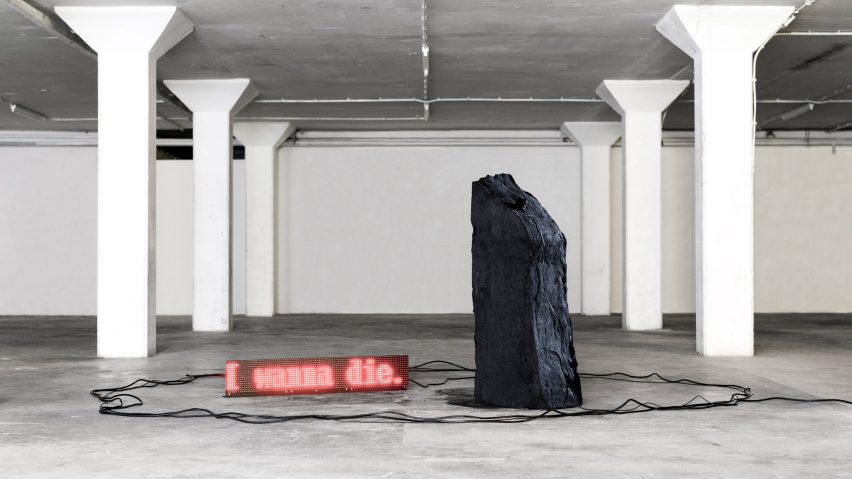Design Academy Eindhoven graduate Fujita Keisuke has made an installation that uses real-time tweets from people expressing suicidal thoughts to activate a motor-powered needle that scratches away at a monolithic block of carbon.
Presented at this year's Dutch Design Week, the Voltaic Realism installation offers as a visual representation of the emotions expressed in these Twitter posts, known as suicide tweets.
Keisuke began the project by studying the emotional impact of different methods of communication, from face-to-face conversations to letter-writing and social media posting.
He found an emotional disconnect between the words expressed online and the effect these posts had on users.
"Today, we live in a generation where a large amount of communication is done by digital signals such as e-mail, online chat and SMS. The information is instant and fast in this age of media saturation," the designer told Dezeen.
"Twitter is flooded with people telling the world that they want to die. Yet, we do not feel the weight of the words on the screen," he continued. "They remain little more than flashing lights."
An algorithm was made to search for the suicide tweets, which were identified using pre-programmed verbal cues such as "I wanna die."
These were projected onto an electronic screen, which sent signals to a motor-powered needle that scratched away at the large chunk of solid carbon.
For each tweet, 0.0054 grams of carbon was scratched from the block – the exact carbon footprint of a tweet, through its transmission from a device to the Twitter server, and then to other devices worldwide.
"I decided to use carbon because it is the physical substance that correlates to the transmitting of digital signals," Keisuke said.
Live tweets were then projected onto the ticker board to ensure that viewers experienced events as they happened.
The immediacy of the process, Keisuke explained, was to provide a different experience of social media, where perception is often delayed, "watching the flashing lights on a display of a smartphone or laptop".
A solid carbon block was chosen as the visual embodiment of the emotions latent in the tweets. "Behind each tweet is a human being. Each tweet is a written expression of the suffering in their heart," he explained.
The algorithm was programmed to select tweets from many languages, to represent the universality of suicide. "There are no cultural and racial barriers when it comes to suicide," Keisuke explained.
Mental health is becoming an increasingly explored topic in design, particularly among graduates. Other projects related to mental wellbeing include a stool for escaping uncomfortable social situations and a set of sensory objects that can be used to rehabilitate women affected by sexual abuse.

